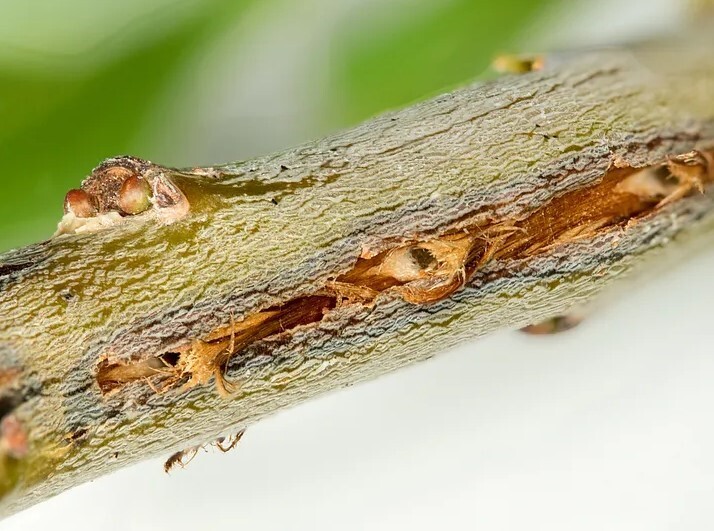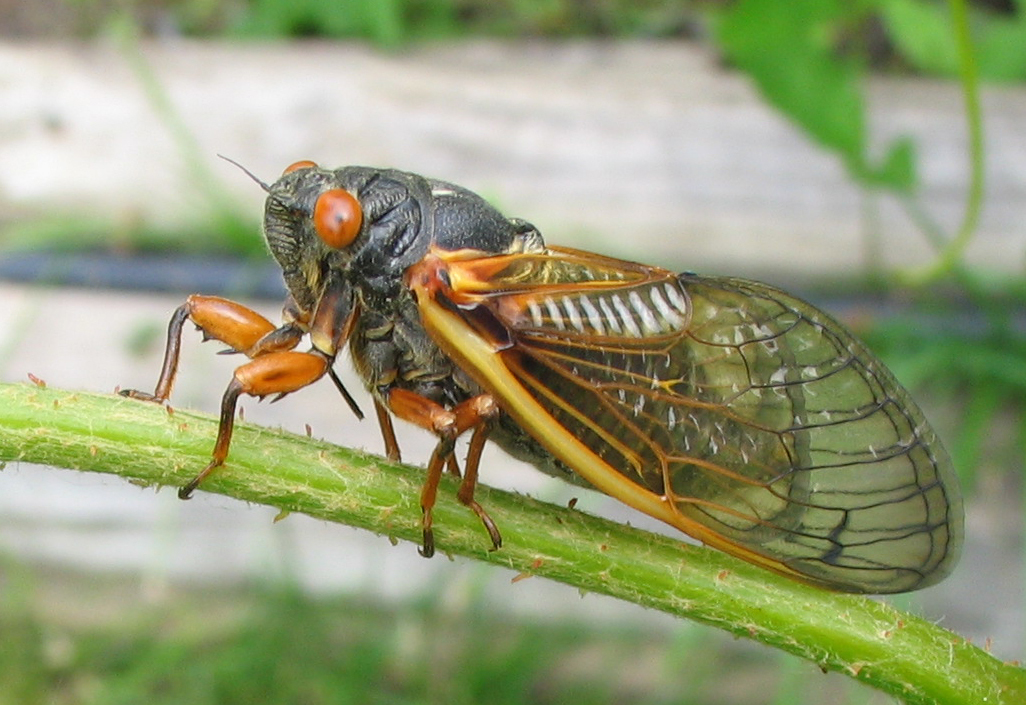With media coverage already starting earlier this year, you’d think that the return of 17-year cicadas was an event on par with the solar eclipse.
Soon, billions of adult cicadas (officially named Brood XIII) will rise out of the ground across northern Illinois and ascend into trees and shrubs. And they’ll create a huge racket with buzzing that can crescendo to nearly 100 decibels. So get your earplugs ready!
This will certainly be a natural spectacle to marvel at (or be disgusted by, given how ugly you may think they are.) Yet contrary to what you may have heard, 17-year cicadas will be a relatively minor threat.
Here’s the lowdown:
When can we expect cicadas to arrive? The Illinois Extension Service projects that cicadas will emerge in late May.
I’ve heard there is a huge brood of 13-year cicadas emerging at the same time. Is this ‘double trouble?’ The 13-year cicadas (Brood XIX) will appear at the same time as the 17-year cicadas. But the two broods only overlap in some areas around Springfield, IL.
Do cicadas bite or sting? They do neither and are not a threat to humans nor most animals and plants. The American Kennel Club cautions that you don’t let your dog eat more than a few shells. More than that can result in stomach upset or other gastrointestinal issues.
Will cicadas damage my plants? Some trees and shrubs are susceptible to damage, particularly because of the huge size of this brood. Cicadas prefer oaks, maples, hawthorns redbuds and fruit trees—particularly cherry and pear trees, according to Davey Tree, a firm specializing in tree care. Yet any young tree or shrub may incur damage due to the small diameter of their limbs. Cicadas do not harm evergreens.
How do they damage trees and shrubs? Damage can occur when female cicadas cut slits in limbs (¼" to ½" in diameter) to lay their eggs. Often leaves on limbs where this occurs will wilt and die.
Soon, billions of adult cicadas (officially named Brood XIII) will rise out of the ground across northern Illinois and ascend into trees and shrubs. And they’ll create a huge racket with buzzing that can crescendo to nearly 100 decibels. So get your earplugs ready!
This will certainly be a natural spectacle to marvel at (or be disgusted by, given how ugly you may think they are.) Yet contrary to what you may have heard, 17-year cicadas will be a relatively minor threat.
Here’s the lowdown:
When can we expect cicadas to arrive? The Illinois Extension Service projects that cicadas will emerge in late May.
I’ve heard there is a huge brood of 13-year cicadas emerging at the same time. Is this ‘double trouble?’ The 13-year cicadas (Brood XIX) will appear at the same time as the 17-year cicadas. But the two broods only overlap in some areas around Springfield, IL.
Do cicadas bite or sting? They do neither and are not a threat to humans nor most animals and plants. The American Kennel Club cautions that you don’t let your dog eat more than a few shells. More than that can result in stomach upset or other gastrointestinal issues.
Will cicadas damage my plants? Some trees and shrubs are susceptible to damage, particularly because of the huge size of this brood. Cicadas prefer oaks, maples, hawthorns redbuds and fruit trees—particularly cherry and pear trees, according to Davey Tree, a firm specializing in tree care. Yet any young tree or shrub may incur damage due to the small diameter of their limbs. Cicadas do not harm evergreens.
How do they damage trees and shrubs? Damage can occur when female cicadas cut slits in limbs (¼" to ½" in diameter) to lay their eggs. Often leaves on limbs where this occurs will wilt and die.

Branch damage caused by female cicadas laying eggs
What about my flower and vegetable plants? Though you may see cicadas perched on these plants, they will not damage them.
How should I protect my trees and shrubs from damage? Cover newly planted trees and shrubs and those with ¼” to ½” diameter branches with netting. You can use cheesecloth or row cover fabric; make sure that the fabric has openings of ½" or less. Securely tie off the material at the plant’s base. This will keep cicadas from crawling up into shrubs and trees when they emerge.
I have branches damaged by cicadas. Now what? Remove and put small, damaged branches in your garbage.
I was planning on planting a tree this spring. Should I wait until next year? By mid-July, adult cicadas should be gone. Hold off planting until then. Better yet, plant in the fall when temperatures cool and rainfall increases.
What do I do with all the shells cicadas leave? Rake them into your garden beds. They will decompose and help enrich your soil. You can also put them in your compost pile or bin.
What is the point of an insect living so long underground, emerging briefly and then disappearing for 17 years? Scientists aren’t certain. They think it could be to avoid predators and ensure successful reproduction of the species. Whatever the reason, the appearance of so many cicadas at once is a protein bonanza for birds, squirrels and other wildlife.
By mid-summer, the chorus of cicadas will be vanishing. Then it will be ‘So Long’ until 2041 when their offspring emerge to repeat the cycle.
How should I protect my trees and shrubs from damage? Cover newly planted trees and shrubs and those with ¼” to ½” diameter branches with netting. You can use cheesecloth or row cover fabric; make sure that the fabric has openings of ½" or less. Securely tie off the material at the plant’s base. This will keep cicadas from crawling up into shrubs and trees when they emerge.
I have branches damaged by cicadas. Now what? Remove and put small, damaged branches in your garbage.
I was planning on planting a tree this spring. Should I wait until next year? By mid-July, adult cicadas should be gone. Hold off planting until then. Better yet, plant in the fall when temperatures cool and rainfall increases.
What do I do with all the shells cicadas leave? Rake them into your garden beds. They will decompose and help enrich your soil. You can also put them in your compost pile or bin.
What is the point of an insect living so long underground, emerging briefly and then disappearing for 17 years? Scientists aren’t certain. They think it could be to avoid predators and ensure successful reproduction of the species. Whatever the reason, the appearance of so many cicadas at once is a protein bonanza for birds, squirrels and other wildlife.
By mid-summer, the chorus of cicadas will be vanishing. Then it will be ‘So Long’ until 2041 when their offspring emerge to repeat the cycle.
